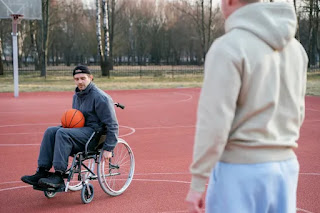What is meant by Wheelchair Maneuvering Space?
Maneuvering space is also known as turning space, turning radius,
turning area, and turning circle. It is an important consideration when
purchasing or renting wheelchairs for sale,
mobility scooters, or any mobility devices. The dimensions of the
maneuvering space differ from device to device, the tighter the radius,
the easier it will be for the user to turn around or maneuver in tight
spaces.
What is Wheelchair Maneuvering Space?
Maneuvering space also known as turning radius, turning space, turning area, or turning circle, is the area taken by your mobility device to make a 180-degree turn. For a smooth U-turn in a wheelchair, the space needed is 78 inches i.e. 197 cm by 60 inches i.e. 153 cm minimum.
How much space does it require for different mobility devices?
The minimum diameter for an electric wheelchair, scooter, or reclining wheelchair user is 94 inches, while more room is always preferable. Therefore, every device must have at least a minimum radius of 30 inches for wheelchairs, and 47 inches for electric wheelchairs, mobility scooters, or reclining wheelchairs. The Electric Wheelchair have the tightest radius which is 20 inches and can make a U-turn in an area of 40 inches. Wheelchairs have a tighter turning area than most mobility scooters.
Where is ample Wheelchair Maneuvering Space required?
Wheelchair accessibility requires clear floor, ground space, and turning space around elements such as fixtures and controls, so that people in wheelchairs, scooters, or other mobility devices can approach, reach, and use them. According to the US Access Board, sufficient ground space is required at drinking fountains, toilets, sinks, appliances, beds, electrical outlets, ATMs and fare machines, and more.
The ground space should be positioned for either a forward or sideways approach with the wheelchair or other mobility device, depending on the element or fixture.
According to the ADA standards, sufficient maneuvering space is not required in every accessible area but is recommended in spaces with a risk of getting trapped, such as small spaces and dead-end aisles/corridors. Ample wheelchair maneuvering space is required in the following spaces:
· toilet and bathing facilities
· dressing, fitting, and locker rooms
· transient lodging guest rooms
· dwelling units
· patient bedrooms
· holding and housing cells
· saunas and steam rooms
· raised courtroom stations served by ramps
· lifts with entry ramps
· certain recreation spaces
The best mobility devices for tight maneuvering spaces.
· Factors, features, and specifications to consider when buying a mobility device, the most important of which are:
· Weight: how much does the device weigh? And is it easily portable?
· Weight capacity: What amount of total weight will the device be bearing?
· Terrain: Different types of terrains the device will be running like smooth, rocky, hilly, etc.
· Lighting: Does your device have headlights for use at night time?
· Accessories: What are the various accessories the device consists of?
Conclusion
Ideally, you should consider a device with the tightest turning area that suits your needs. Even the smallest mobility scooter requires more room to maneuver than a manual or electric wheelchair, as they are designed for outdoor usage. If you wish to have a mobility device with the tightest turning radius, you should consider a three-wheel scooter. Power wheelchairs typically have a significantly tighter turning radius due to their smaller, compact design. To purchase the best suited Electric wheelchairs for sale or mobility scooters for sale, you can browse through the internet. There are various websites or online stores available that can provide you your desired mobility device.



.jpg)

Comments
Post a Comment